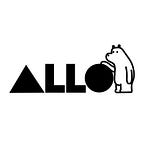“We tested out many OKR software tools, but my team didn’t really get into it until we came across this one.”
The other day, I had a really interesting discussion with a co-founder and CTO regarding tools for setting goals and best practices surrounding OKRs.(Objectives and Key Results) for our teams. The big challenge companies, managers and team leaders face is making sure everyone deeply understands not only the big overall company-level goals, but also how their personal OKRs fit into the bigger picture.
Nowadays, there are lots of software options out there that can help with setting goals. Some examples are Asana and ClickUp. You can even make your own using tools like AirTable or Monday.com, or stick with classics like Excel or Google Sheets. You might wonder, with all these choices, why is goal setting and OKR management still such a challenge? Well, it comes down to something my colleague shared that really hit home and resonated with other team leaders I’ve spoken to.
His big insight was that, “it’s really all about keeping the team directly connected to the goals”. It’s not just about finishing tasks, checking off boxes or updating each other on places like Slack, where status and tracking can easily get lost. What really matters is keeping up the same kind of clarity, excitement, and teamwork that we have when we first set the goals: the key things to achieve, why they matter, how those goals relate to each person and team, and how we’re all going to get there together.
Of course, as time goes on, new tasks and adjustments will naturally pop up. But here’s the question: how do we make sure the team stays aligned and communicative about how their goals AND the resulting overall company goals are tracking, without messing up the organized system we initially set up to keep track of everything?
So, we put our heads together and came up with some key best practices to follow when you’re choosing a system to set goals with your team:
- Make It Simple to Understand: Look for a tool that helps you convey your goals and what you want to achieve in a clear and simple way. Your team should be able to understand it all without confusion.
- Easy for Everyone: The tool/platform you choose should be easy to use and intuitive for all team members regardless of technical ability. Your team should be able to jump right in without a steep learning curve.
- See How We’re Doing: If you’re the manager or team leader, you should be able to see how everyone’s tracking without always asking or interrupting your team members for updates. The tool should clearly illustrate how the team is tracking against the goals — large and small.
- Fit Everything Together: Find a tool that lets you to link and connect resources from various other tools you use for your team.This helps everything connect directly to the goals and relevant team members, rather than forcing people to hunt for related data, files and resources.
So, next time you’re getting ready to set goals with your team, keep these best practices in your mind. Let’s keep our goals clear and inspiring, everyone understanding them and feeling accountable, and empower our teams to hit those both their individual goals as well as the overall company goals — together. That’s progress!
Oh, before I forget, you might be curious about the tool that really got his team involved and made them connect with their goals successfully. The tool is called ALLO, and it really enables all the best practices I mentioned above.
Feel free to reach out if you want to chat more about this — I’m always here to help!
